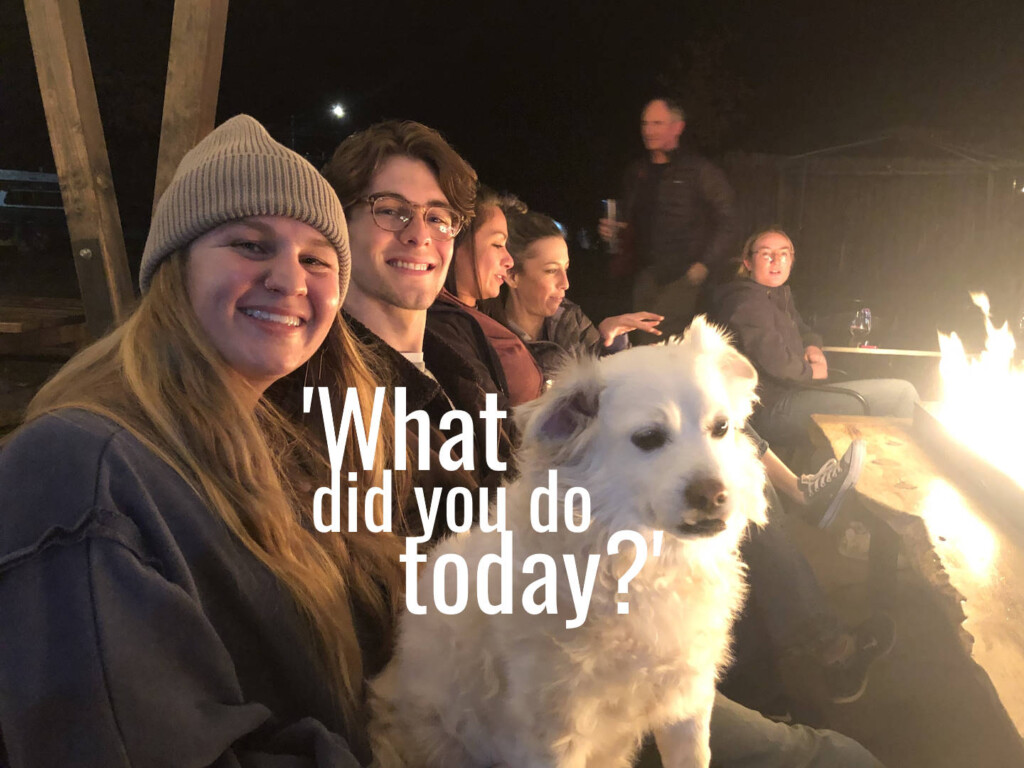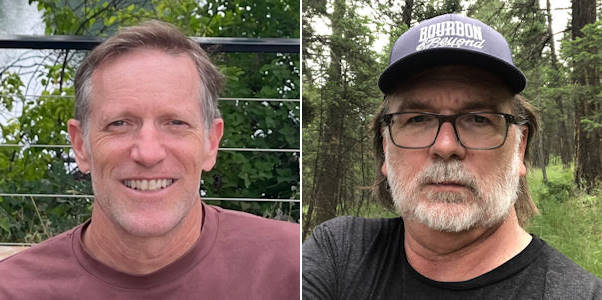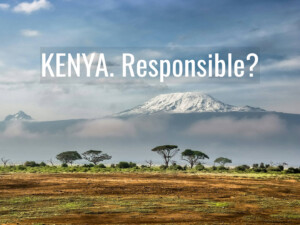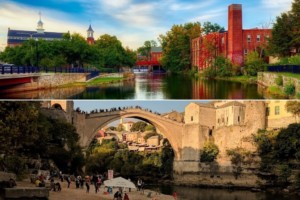On ‘permanent vacation’: Why digital nomads feel at ‘home’ in Bend, Oregon

For some, excessive work-related travel disrupts lives at home. For digital nomads, work makes itinerant lifestyles possible.
Digital nomads may be an attractive long-stay visitor segment for some destinations to target. But they won’t stay very long if they don’t like the place.
What makes destinations attractive to digital nomads? Ron Davidson and Ed Jackiewicz find some clues in Bend, Oregon, USA.
It’s a “Good Tourism” Insight. (You too can write a “GT” Insight.)
Table of contents
Introducing Bend, Oregon
The town of Bend, Oregon, USA attracts tourists seeking an immersive experience in the American West. A former lumber-mill and cattle-ranching town, Bend’s stock of historic buildings — one of which houses an artefact-crammed local history museum — help give the town a western ambience and tell the story of its rustic past.
Bend’s location on a tranquil bend of the Deschutes River, historically important to Native Americans as well as the pioneers on the Oregon Trail, evokes the west even more richly. The ponderosa pines of the Deschutes National Forest grade into the high-desert scrub of east-central Oregon, with Cascade peaks flagging the Pacific horizon. It is as dramatically “Western” a scene as any John Wayne tore through on a quarter horse, six-guns blazing.
But tourists hungry for a connection to the American Old West should take note: for all its Old West history and grandeur, Bend today is thoroughly and enthusiastically ‘New West’ (the term coined to describe the rapidly transforming, economically diversifying communities of the Inter-Mountain American West).
From Old West to New West
The Old West began morphing into the New in the 1970s, when declining resource extraction in tandem with increased mechanisation eliminated jobs for ranchers, miners, loggers, mill workers, and others employed in extractive “Old West” occupations. Rural communities across the region declined.
Many of these communities have since surged back to life with tourists and migrants drawn not to jobs, but to the quality of life these places offer; especially the ‘stepping-stone’ ones that link not-too-distant cities to adjacent natural amenities, and that have supportive infrastructure (roads, hotels, condos, etc).
Retirees, seasonal and lifestyle migrants, second-home tourists, and other part- and full-time residents began swelling local populations. Thus, New West communities have grown, some into cities, with diverse economies that foreground lifestyle provision, with burgeoning service sectors that include tourism, restaurants, hotels, retail, and diverse cultural offerings.
Also see Tanner C Knorr’s “GT” Insight ‘On the fringes: When the City of Sedona’s tourism policy failed the urban outskirts’
(In Bend you might not see a cowboy with a six-gun, but you can buy hiking boots at an REI store occupying the town’s former lumber mill, catch a concert at the 8000-capacity amphitheatre across the river, play disc golf in the nearby lava fields, eat sophisticated cuisine downtown, and sip artisanal coffees and craft beers at any number of local establishments.)
While the West has been “Newing” for decades, the centrality of lifestyle provision in the economic and cultural life of towns like Bend has intensified in recent years in part due to the convergence of a second, increasingly important trend: the emergence of a global workforce of place-independent workers.
The rise of the digital nomad
In 1997, Tsugio Makimoto and David Manners coined the phrase ‘digital nomads’ to name this then-nascent workforce. Liberated from ‘places’ of employment by the internet, digital nomads could work from laptop computers wherever WiFi signals and power outlets exist.
This workforce is no longer nascent. The State of Independence annual survey, which began to include digital nomads as a separate category in 2018, documents a 131% rise in their domestic numbers since then, from 7.3 million in pre-covid 2019 to 16.9 million in 2022. By these figures, almost 11% of the 158 million Americans employed in 2022 were digital nomads.
Perhaps the ultimate mixers of work with leisure, digital nomads divide not the year, but the day into work and vacation time. (At times, there seems to be no division at all, as when one sees digital nomads in Bend getting the job done on the veranda of a riverside cafe, or in a relatively quiet corner of a brewpub.)
There may be a deflating aspect to sweating work deadlines in paradise. Many digital nomads also cope with precarity, balancing multiple part-time jobs or contract work in an unstable global economy. But it seems equally true that, in making the most of their mobility to seek lifestyle fulfilment, digital nomads are, in a sense, on “permanent vacation” (or at least engaging in tourist activities with intense regularity).
Bend’s trends
Little wonder that digital nomads tend to converge on places that have historically served as tourist destinations. Bend, Oregon, with its diverse cultural and natural amenities, is a prime example.
While official numbers are hard to come by — digital nomads are transient and thus difficult to document in census figures — our initial research suggests they are a significant presence in Bend.
Digital nomads add to the ranks of lifestyle migrants that have helped swell the town’s official population from 5,000 in the late 1950s to more than 100,000 today.
The development of the Sunriver Resort in the 1960s helped turn the area into a popular, mostly regional, tourist destination. By 1990, Bend’s population was still around 20,000. The next 10 years, however, witnessed a more than 150% increase in total population, mainly fueled by retirees and lifestyle migrants.
Rapid growth continued through the first decades of the 21st century, but fueled less by retirees and more by digital nomads pursuing permanent vacation.
Don’t miss other “Good Tourism” content about destinations in the Americas
Digital nomads are different
It is important to highlight the qualities that differentiate digital nomads from other lifestyle migrants:
- Digital nomads’ bold, good-life-seeker ethos and comparatively fluid mobility distinguish them from retirees, seasonal residents, and others who settle in place or into a seasonal routine.
- Digital nomads are not like tourists either, since they do not have to return ‘home’. In theory, at least, they can stay for as long or as brief a visit as they want to.
- Digital nomads can choose destinations based on real-time conditions. Nomadist.com, for example, lists cities and towns around the world and ranks them based on crowdsourced ratings of a wide range of considerations for remote workers, from internet speeds and cost of living, to social politics and economic freedom. It also draws from official sources such as air quality monitoring stations.
There is an economic imperative for towns to be both attractive (if they seek visitation) and retentive (if they seek population stability or growth). Towns that want to attract and retain aggressively footloose digital nomads may need to focus even harder on delivering both instant gratification and long-term life satisfaction.
Why digital nomads like Bend
A tour of Bend offers clues, perhaps, on what a town might do if it wants to replicate Bend’s success in attracting digital nomads.
Bend’s modestly sized downtown is filled with cultural amenities and entertainments. A high concentration leads to specialisation and diversity, with, for example, a rich variety of cuisines, artisanal coffees, and craft brews to choose from. Alleys are lined with doorways to intriguing bookstores, art galleries, and a tiny arthouse movie theatre.
The effect is not cluttered space, which would likely repel the cosmopolitan digital nomad, but a sense of abundance and depths to explore.
More relaxed social spaces are everywhere too. The town has seven food truck pods (each featuring a brewpub and several food trucks enclosing a seating area with picnic tables), each with a distinct name and theme, selection of food, and menu of activities (trivia, bingo, and live music, for example). These communal pleasure spots are ideal for enabling newcomers to make instant connections.
And when people in Bend meet a stranger, they tend not to ask “What do you do?”; a question digital nomads get all the time. As befits a lifestyle-centric town, the locals are more likely to say “What did you do today?”
What do you think?
What do you think about the phenomenon of digital nomadism? Are digital nomads a good target market for destinations? Share your thoughts in a comment below.
Or write a “GT” Insight. The “Good Tourism” Blog welcomes diversity of opinion and perspective about travel & tourism, because travel & tourism is everyone’s business.
“GT” is where free thought travels.
About the authors

Ron Davidson is a cultural geographer at California State University, Northridge. His research focuses on public space in North America and Japan.
Ed Jackiewicz is Professor of Geography and Environmental Studies at California State University, Northridge with specialisations in tourism geography and mobilities. He is the co-editor of Placing Latin America: Contemporary Themes in Geography (Rowman & Littlefield), now in its Fourth Edition.
Featured image (top of post)
On ‘permanent vacation’ Why digital nomads feel at ‘home’ in Bend, Oregon. Rather than ask: “What do you do?”, Bend locals are more likely to say “What did you do today?” Photo by Ed Jackiewicz. “GT” cropped it and added ‘“What did you do today?’





